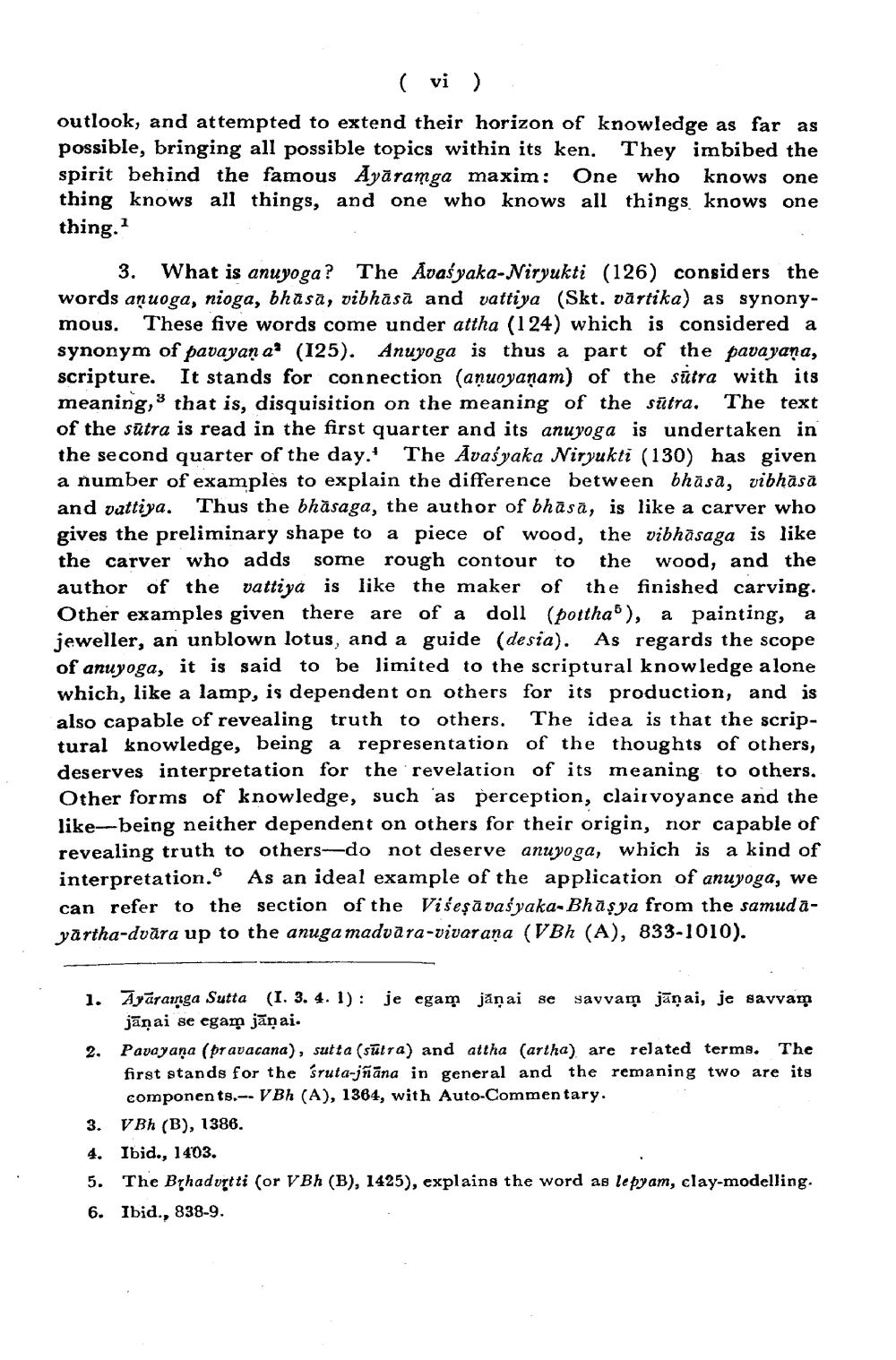Book Title: Agam 45 Chulika 02 Anuyogdwar Sutra Author(s): Nathmal Tatia Publisher: Research Institute of Prakrit Jainology & Ahimsa Mujjaffarpur View full book textPage 7
________________ (vi) outlook, and attempted to extend their horizon of knowledge as far as possible, bringing all possible topics within its ken. They imbibed the spirit behind the famous Ayāramga maxim: One who knows one thing knows all things, and one who knows all things knows one thing.1 3. What is anuyoga? The Avasyaka-Niryukti (126) considers the words anuoga, nioga, bhāsā, vibhāsā and vattiya (Skt. vārtika) as synonymous. These five words come under attha (124) which is considered a synonym of pavayan a1 (125). Anuyoga is thus a part of the pavayaṇa, scripture. It stands for connection (anuoyaṇam) of the sutra with its meaning, that is, disquisition on the meaning of the sutra. The text of the sutra is read in the first quarter and its anuyoga is undertaken in the second quarter of the day. The Avasyaka Niryukti (130) has given a number of examples to explain the difference between bhāsā, vibhāsā and vattiya. Thus the bhasaga, the author of bhāsā, is like a carver who gives the preliminary shape to a piece of wood, the vibhāsaga is like the carver who adds some rough contour to the wood, and the author of the vattiya is like the maker of the finished carving. Other examples given there are of a doll (pottha), a painting, a jeweller, an unblown lotus, and a guide (desia). As regards the scope of anuyoga, it is said to be limited to the scriptural knowledge alone which, like a lamp, is dependent on others for its production, and is also capable of revealing truth to others. The idea is that the scriptural knowledge, being a representation of the thoughts of others, deserves interpretation for the revelation of its meaning to others. Other forms of knowledge, such as perception, clairvoyance and the like-being neither dependent on others for their origin, nor capable of revealing truth to others do not deserve anuyoga, which is a kind of interpretation. As an ideal example of the application of anuyoga, we can refer to the section of the Viseṣavasyaka-Bhāṣya from the samudayartha-dvara up to the anuga madvara-vivarana (VBh (A), 833-1010). 3 1. Araraga Sutta (I. 3. 4. 1): je egam jāņai se savvam janai, je savvam janai se egam jāņai. 2. Pavayana (pravacana), sutta (sutra) and attha (artha) are related terms. The first stands for the śruta-jñana in general and the remaning two are its components.-- VBh (A), 1364, with Auto-Commentary. VBh (B), 1386. 3. 4. Ibid., 1403. 5. The Brhadurtti (or VBh (B), 1425), explains the word as lepy am, clay-modelling. 6. Ibid., 838-9.Page Navigation
1 ... 5 6 7 8 9 10 11 12 13 14 15 16 17 18 19 20 21 22 23 24 25 26 27 28 29 30 31 32 33 34 35 36 37 38 39 40 41 42 43 44 45 46 47 48 49 50 51 52 53 54 55 56 57 58 59 60 61 62 63 64 65 66 67 68 69 70 71 72 ... 312
